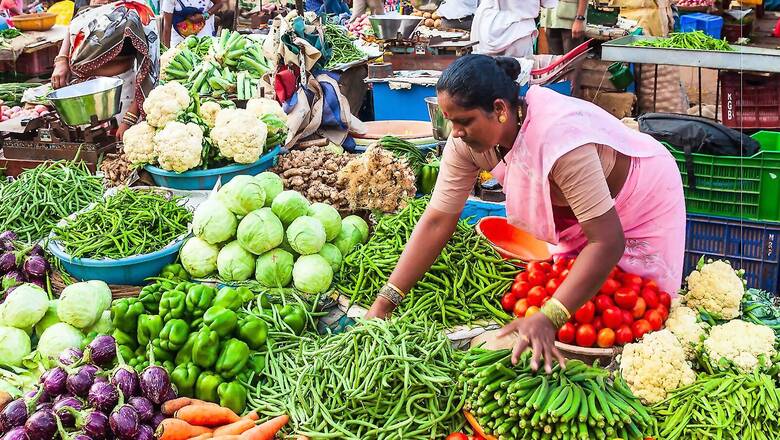
views
As input costs for companies are rising amid global uncertainties and high international commodity rates, prices of various products in India are also getting a hit, including vegetables, packed food items, milk and edible oils, thus stoking retail inflation that is hovering at over eight-year high levels. Economists expect inflation to rise further in the next quarter before easing.
Indonesia recently lifted its export ban on palm oil, which has given a major respite to India. The ban impact edible prices in India. However, now, Malaysia is banning the exports of chicken that will majorly affect Singapore (which sources a third of its supply from Malaysia), Thailand, Brunei, Japan and Hong Kong. The ban is the latest in a series of the Malaysian government’s measures aimed at easing domestic prices as nations around the world battle rising food costs, partly driven by the war in Ukraine crimping food supplies.
In April, the retail inflation, based on the Consumer Price Index (CPI), soared to an eight-year high of 7.79 per cent, compared with 4.23 per cent in April 2021 and 6.97 per cent in March 2022. Inflation in the food basket rose to 8.38 per cent in April, from 7.68 per cent in the preceding month and 1.96 per cent in the year-ago month.
Last week, tomatoes in Delhi were selling at Rs 60-80 per kg, while their prices were reaching up to Rs 100 in some parts of the country. The price of lemon was hovering at Rs 200-Rs 250 per kg in the national capital. Cauliflower was at Rs 120, potato at Rs 40, onion also at Rs 35-40, brinjal at up to 80 per kg, capsicum at Rs 100-Rs 130, spinach at Rs 60 per kg, and carrot at Rs 80. Milk prices have also increased recently, with Amul, Parag and Verka raising per-litre prices by up to Rs 2.
Deloitte India Economist Rumki Majumdar said, “We have been highlighting the cost-push and demand-pull inflation dynamics and the risk of inflation spiralling up for a long time. India has been experiencing inflation for a while now. Prices remaining elevated for too long can feed into inflation expectations further pushing up prices.”
Majumdar added that price worries are the top concerns for policymakers and the recent measures suggest there is no time to lose. Fiscal and monetary measures are necessary to tame inflation but it may take a while for inflation to ease.
“We expect prices to be high for at least the next two quarters and ease in the latter half of FY2022-23. By then, investors would have factored in uncertainties around the geopolitical crisis, and energy prices will likely settle. Supply chain disruptions may continue but ease significantly over the next two quarters as China gradually lifts restrictions. Besides, demand too may slow down and the base effect will kick in. The only wild card would be the monsoon; a below-normal monsoon can pressure food prices, which will feed into the overall inflation,” Majumdar said.
She also said there is more inflation coming and “we expect inflation to peak at around 9 per cent in the next quarter and then gradually ease. Prices will likely fall below 6 per cent in Q4 of the FY. This is assuming that the monsoon is normal and government interventions start showing effect”.
India Ratings and Research in its report said retail inflation after averaging 4.1 per cent during FY16-FY19 had crossed the RBI’s upper tolerance band of 6 per cent for the first time in December 2019. Immediately after the economy fell in the grip of the first covid wave, resulting in the countrywide lockdown starting late March 2020 until May 2020. “However, despite the collapse of demand, the monthly retail inflation mostly remained in excess of 6 per cent till November 2020 because of supply-side disruption.”
The agency said it expects the retail inflation to increase till September 2022 and start declining gradually thereafter.
Read all the Latest Business News here


















Comments
0 comment